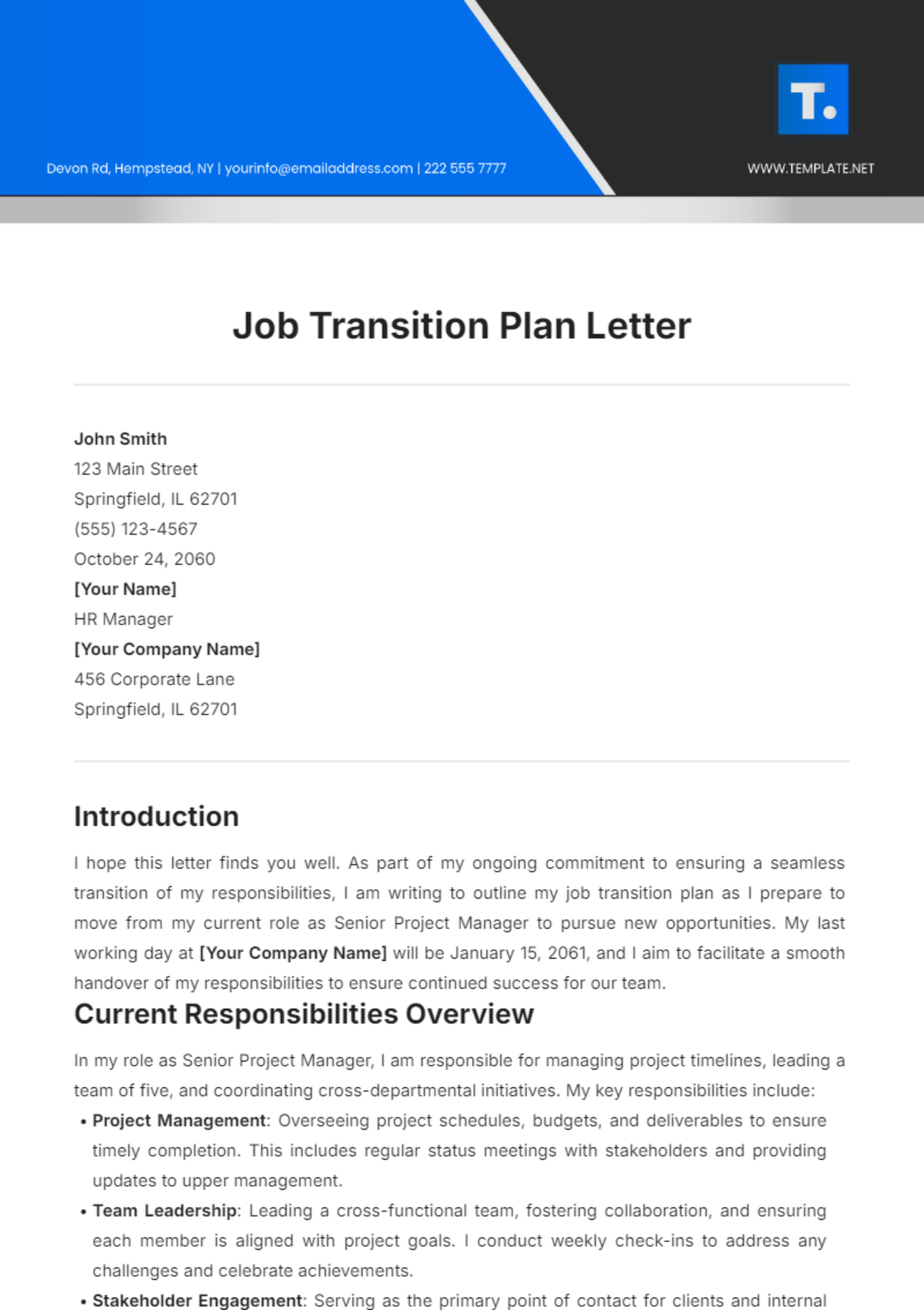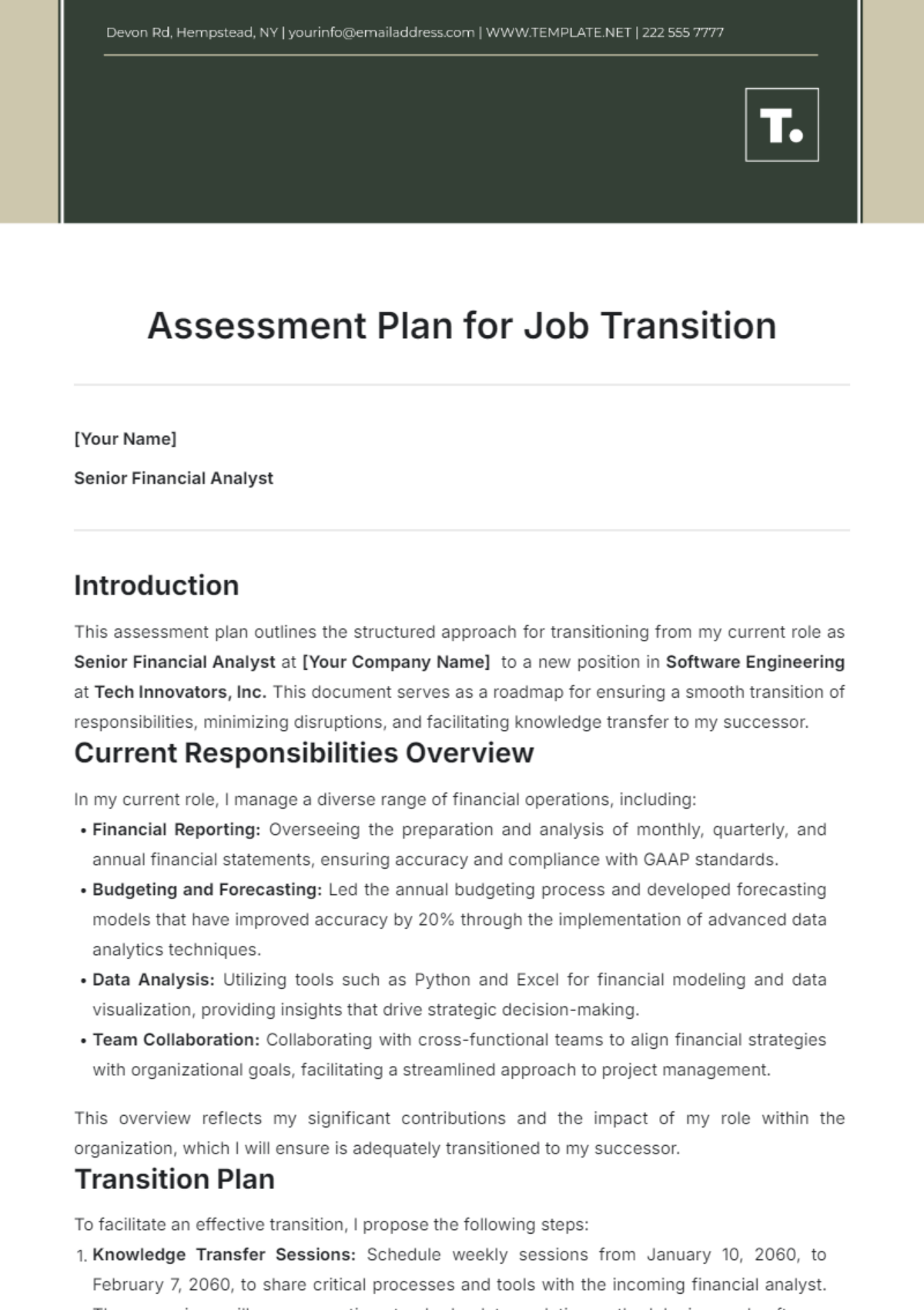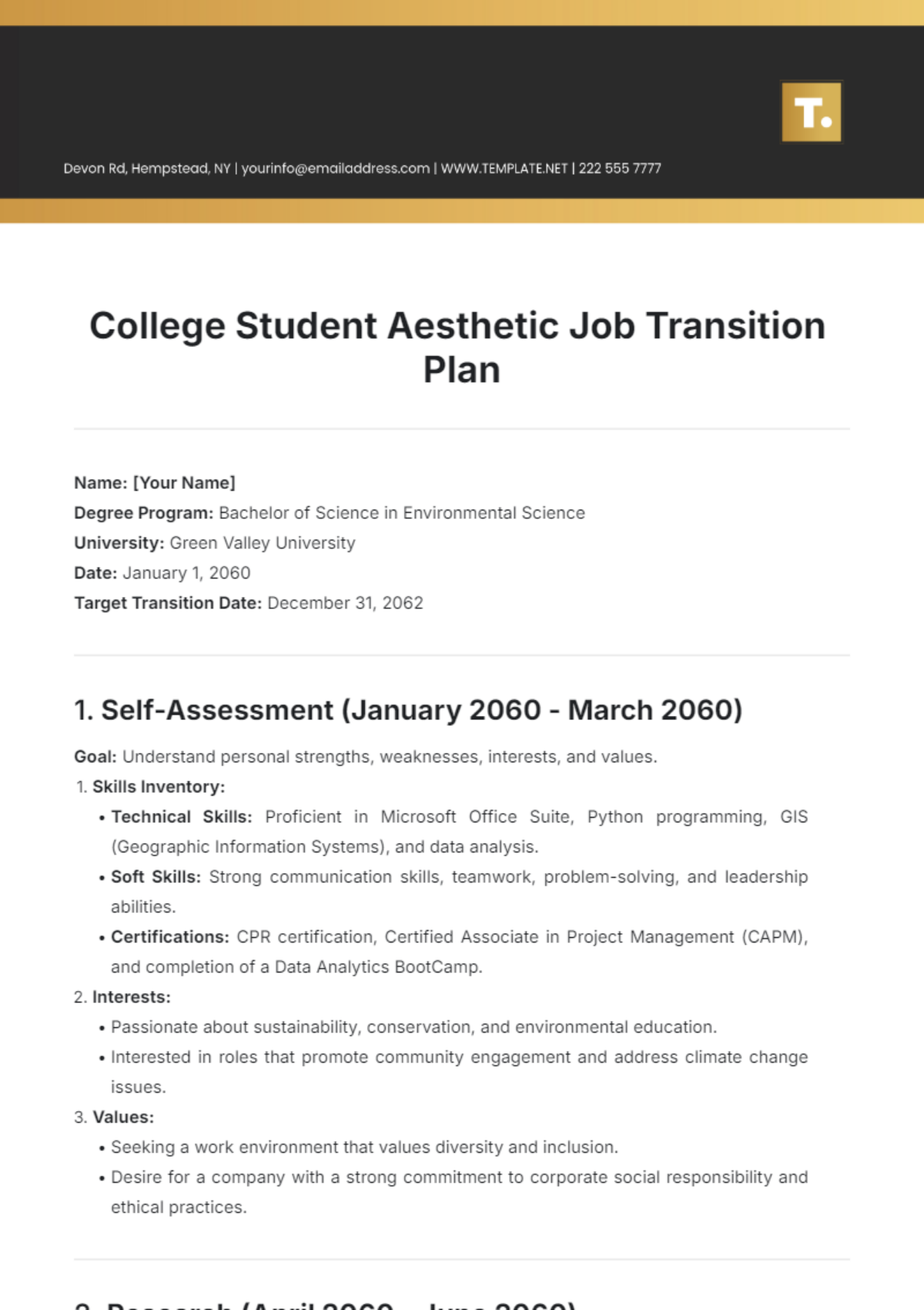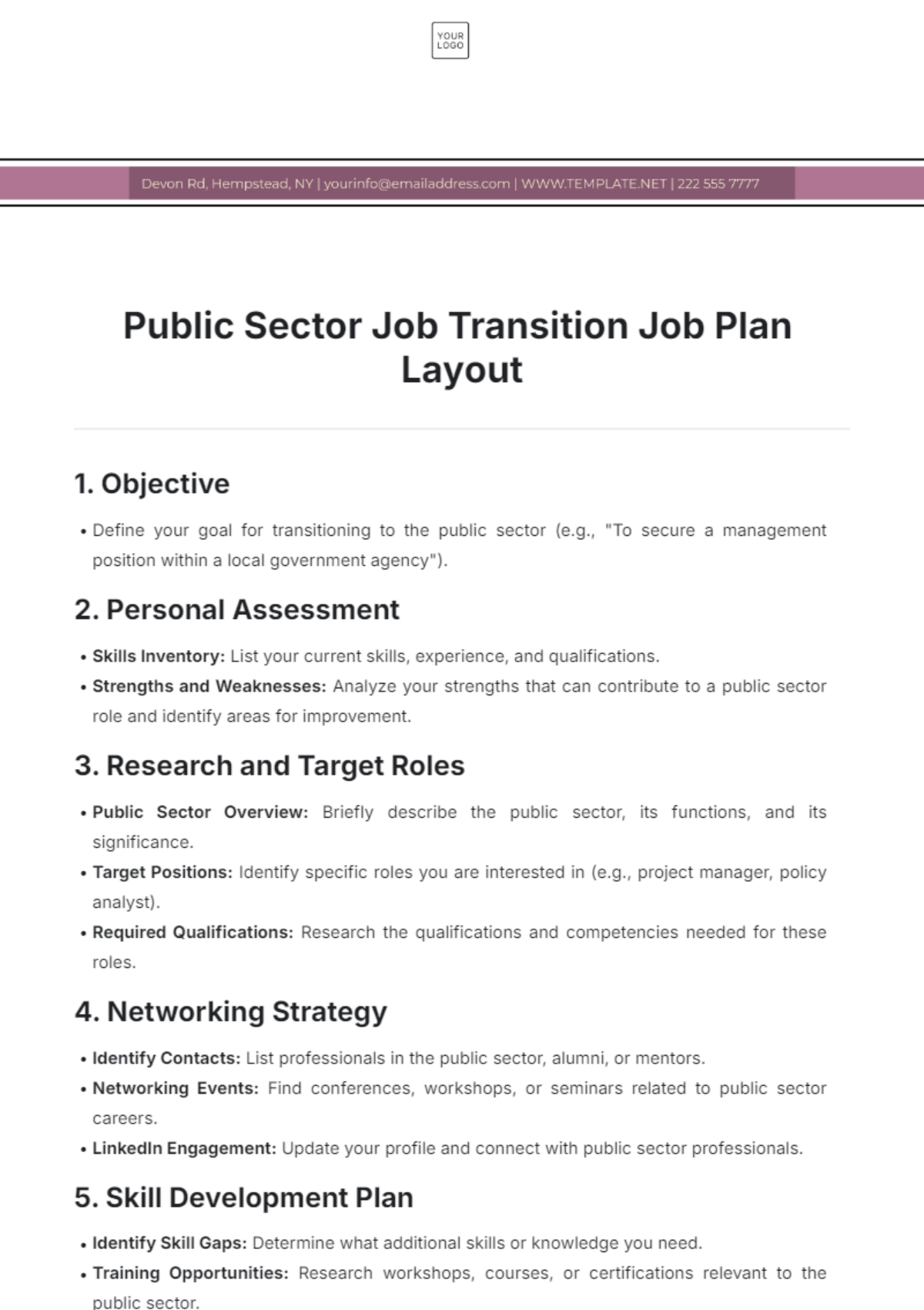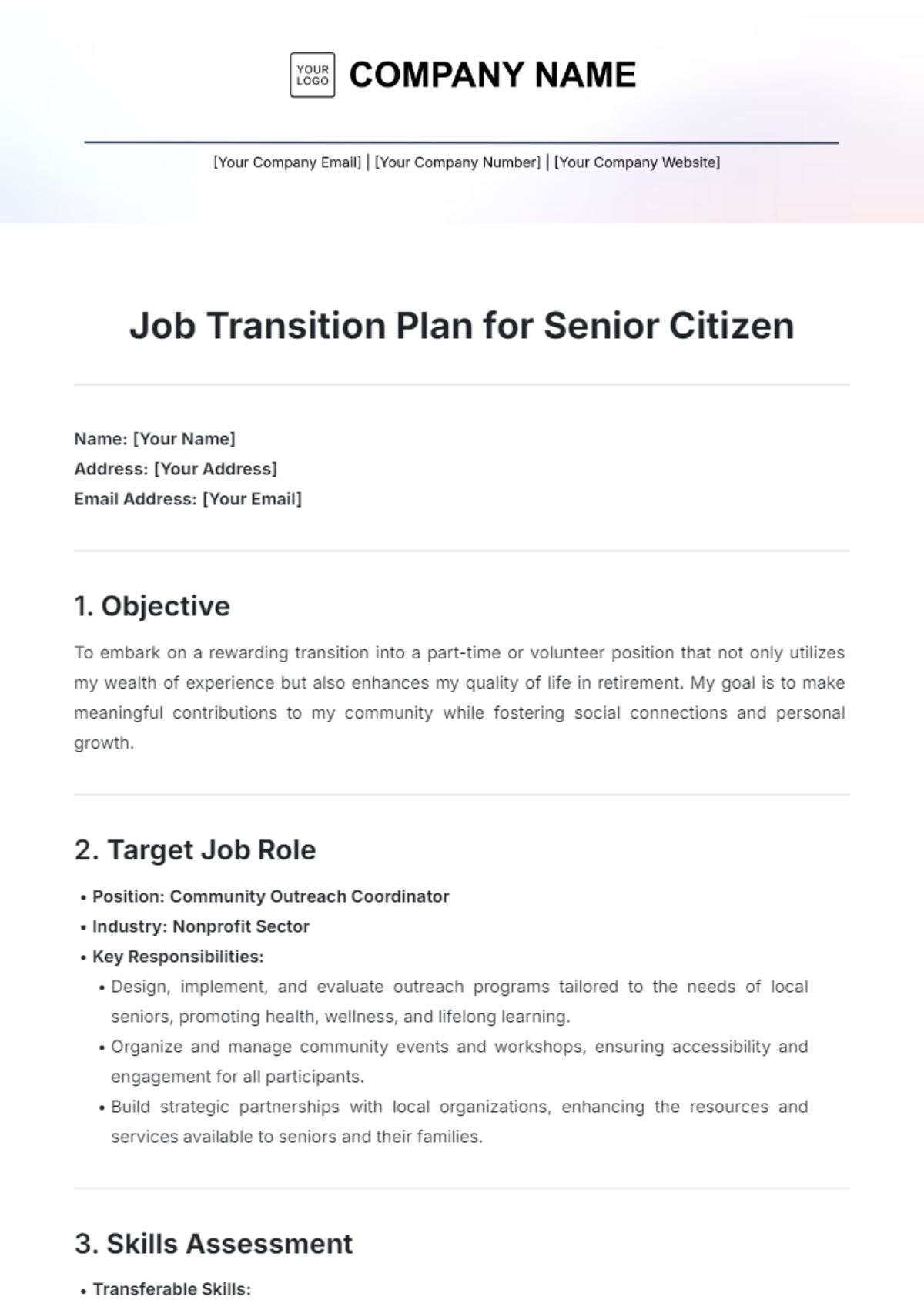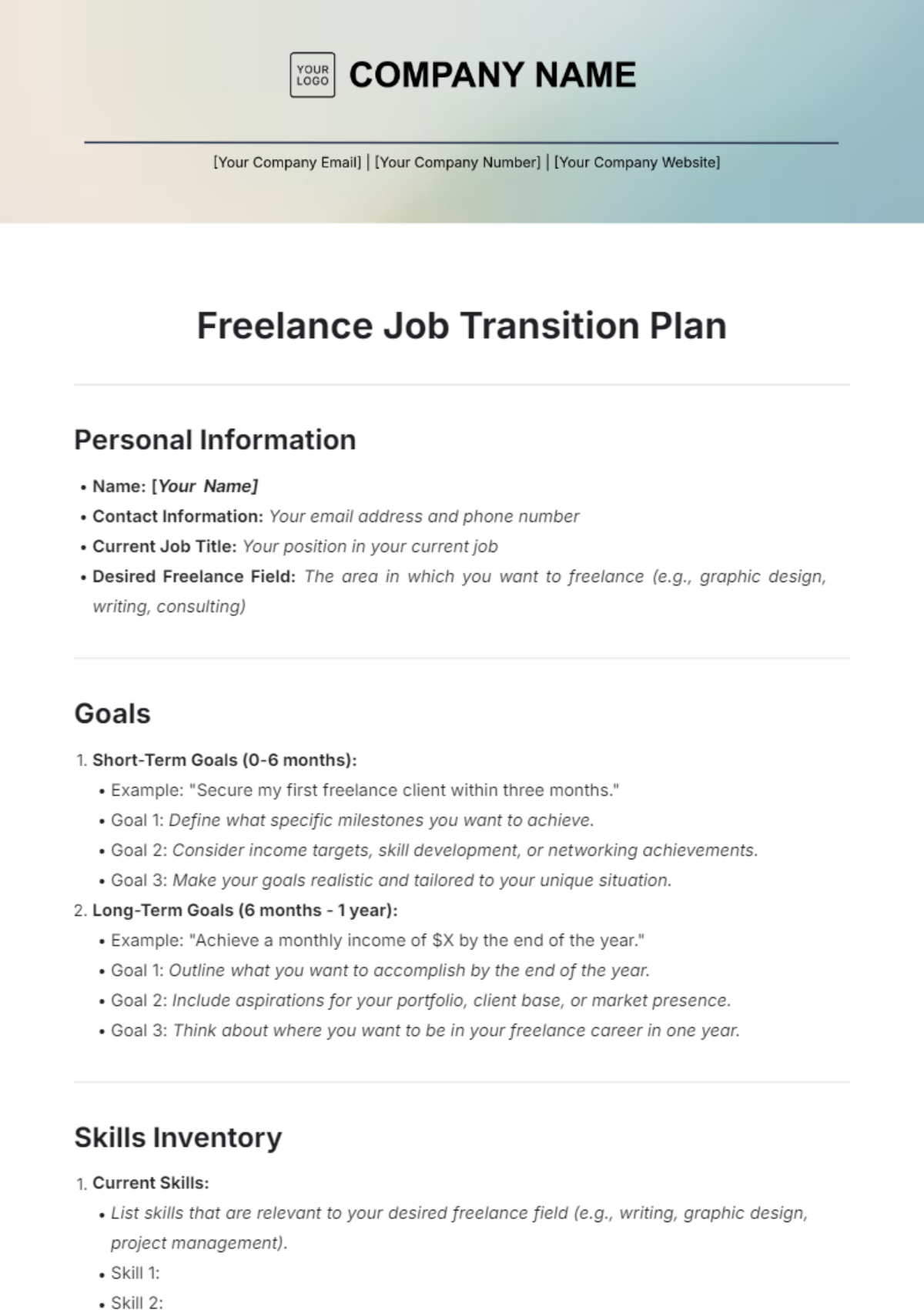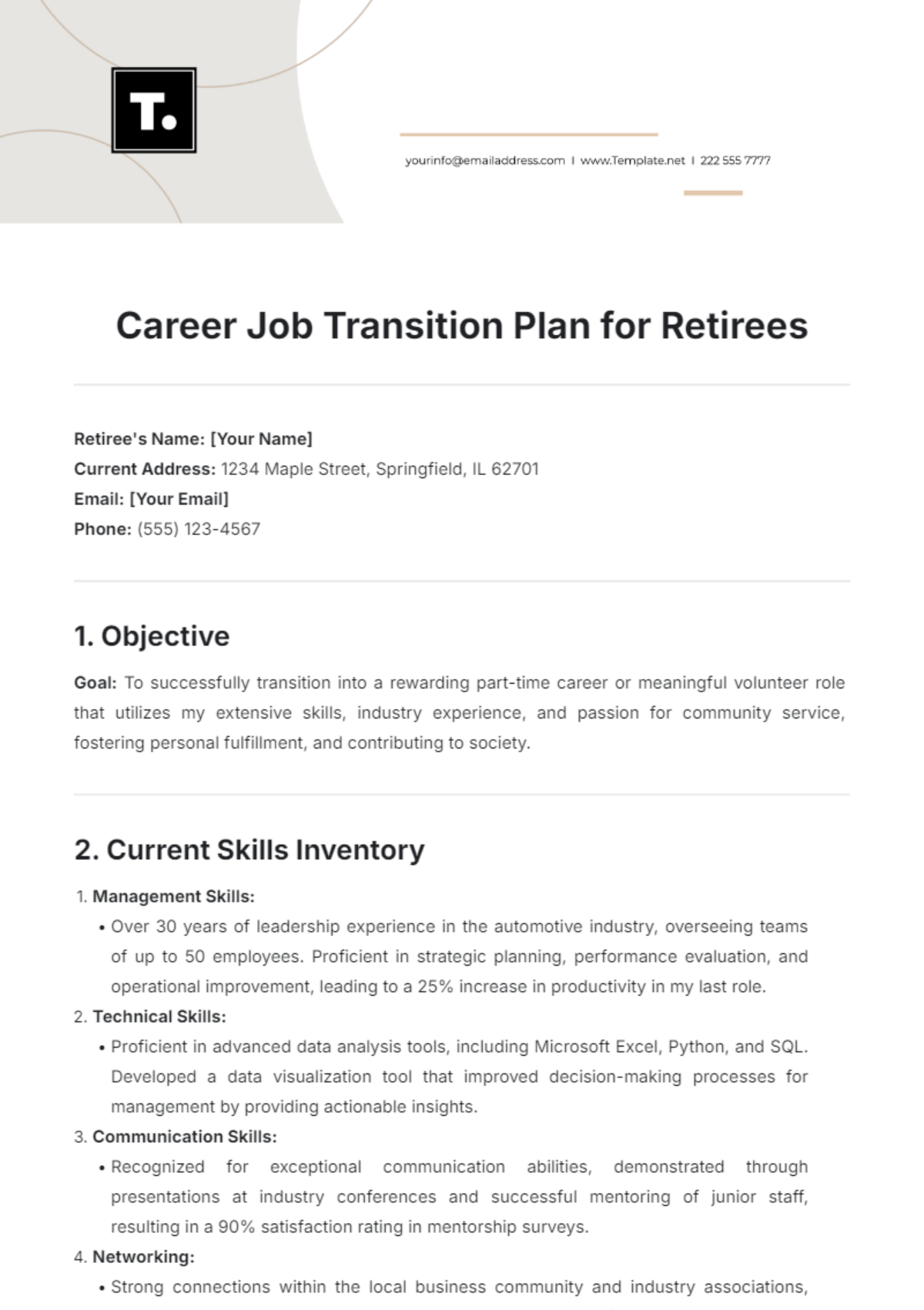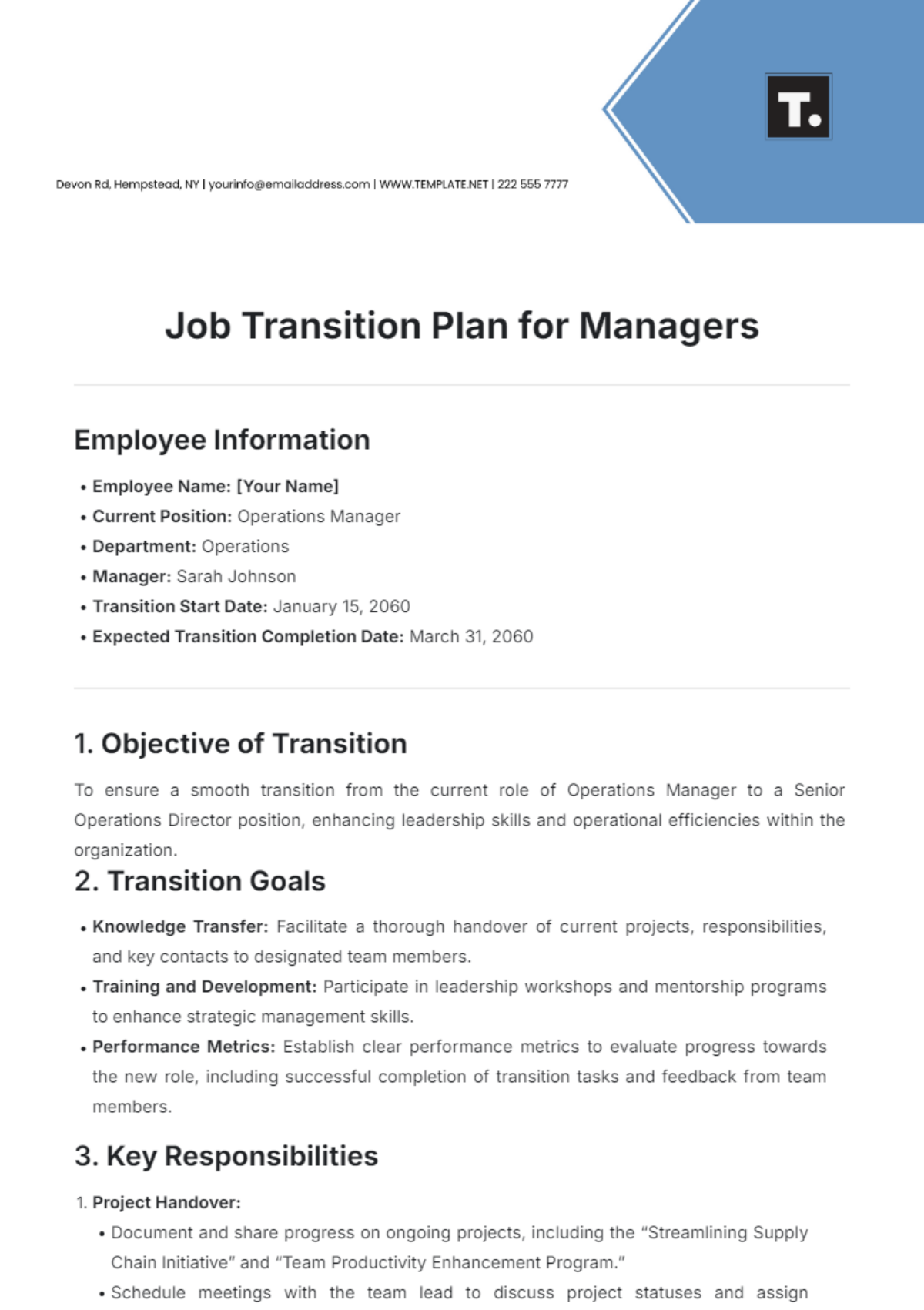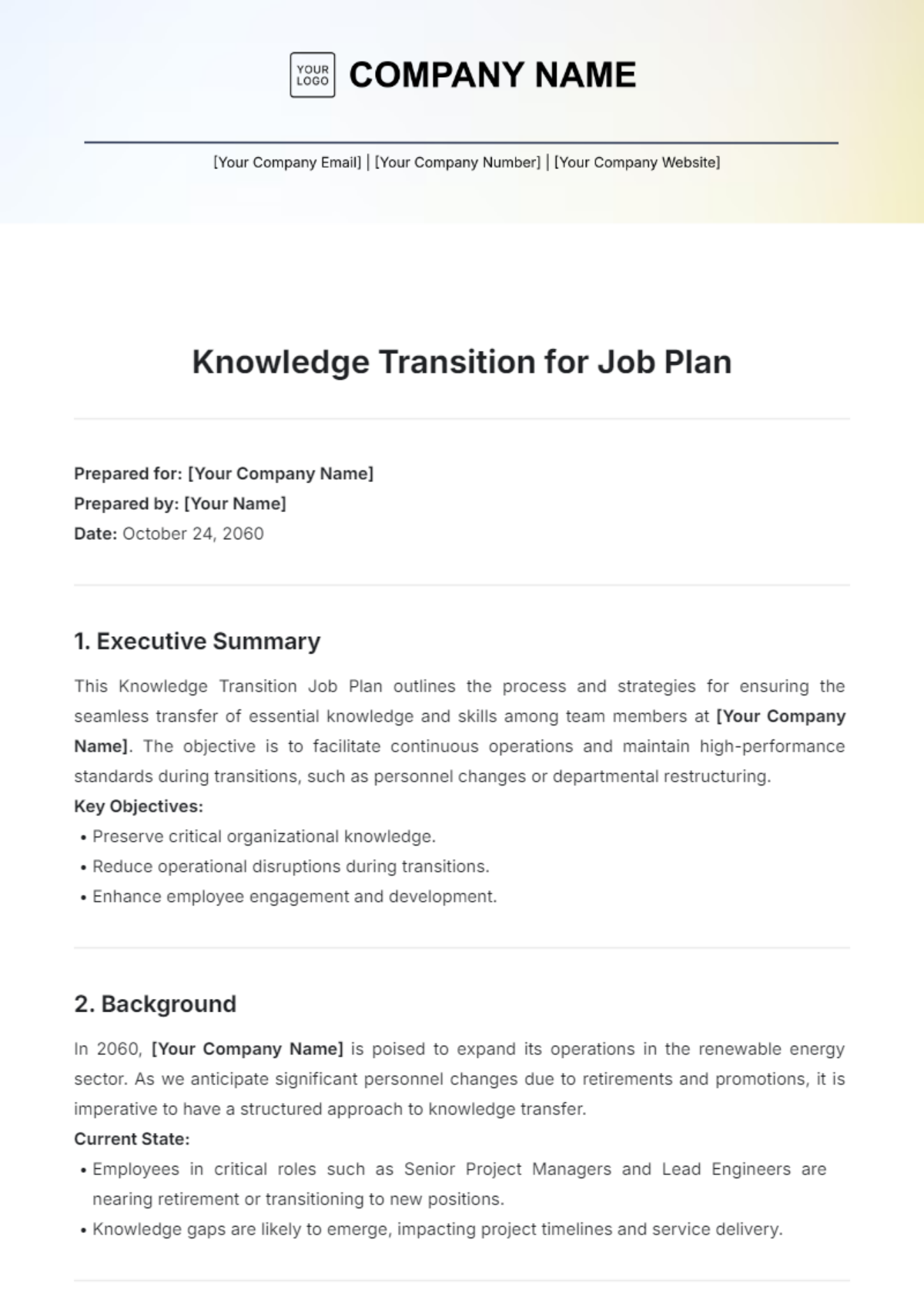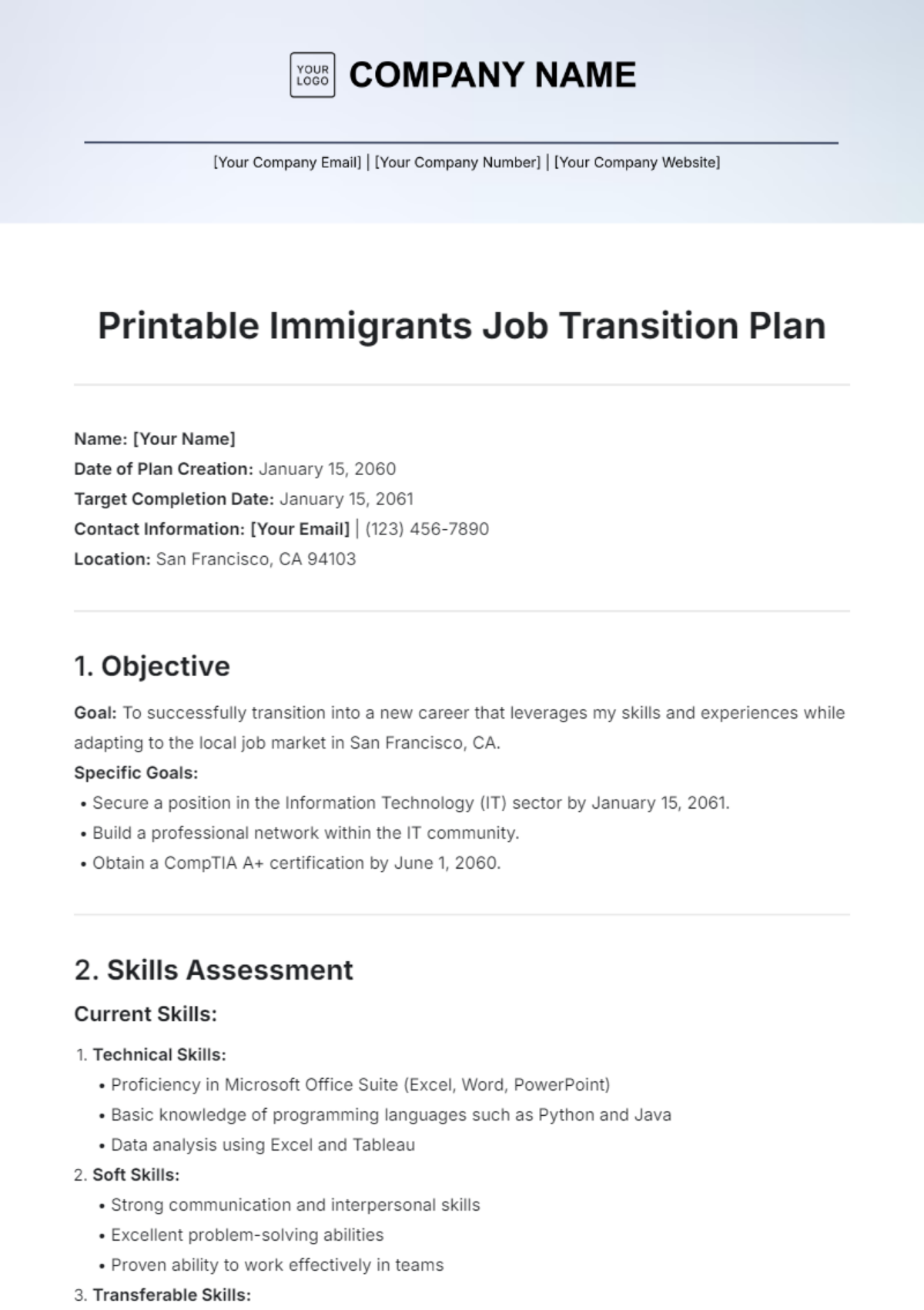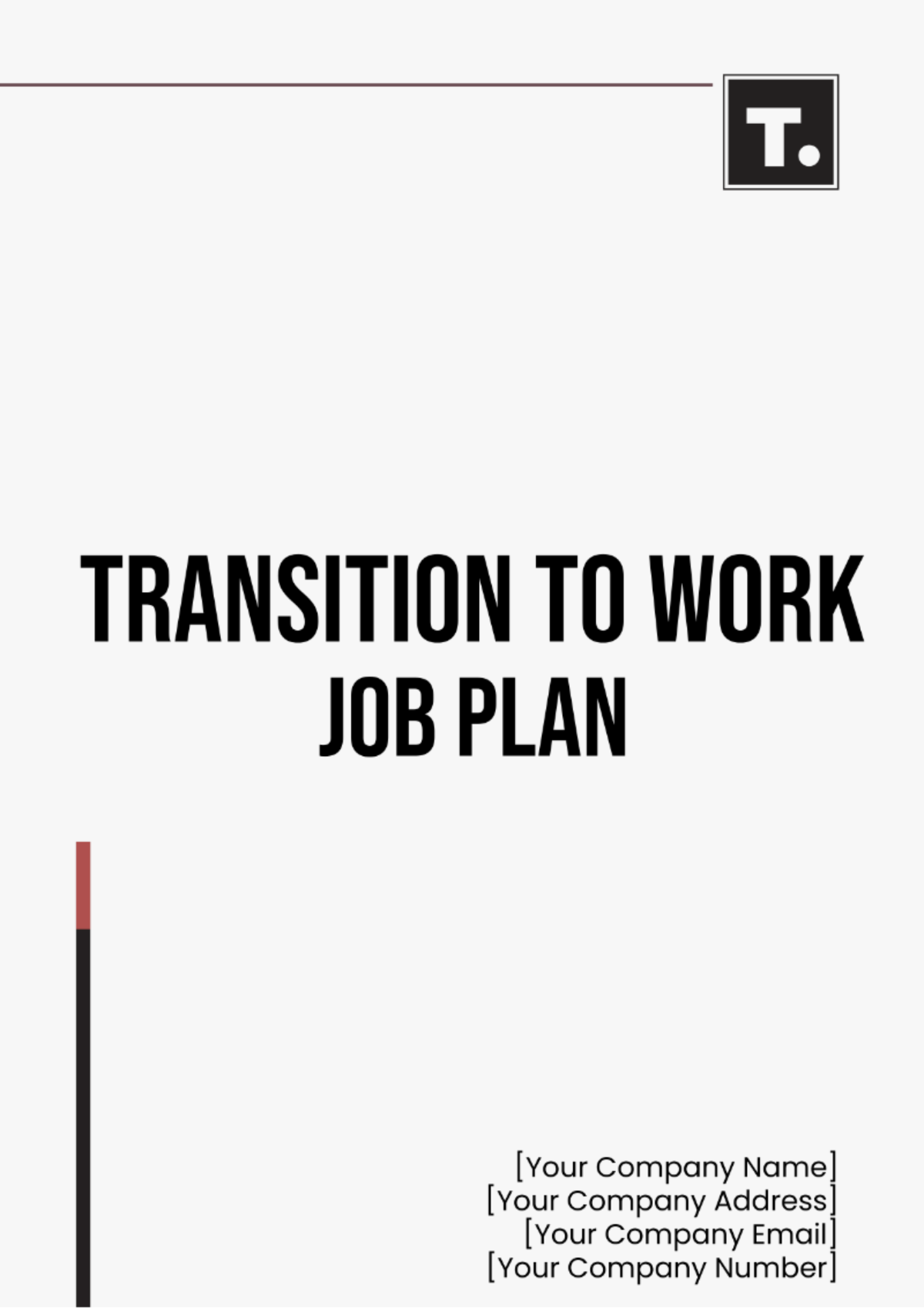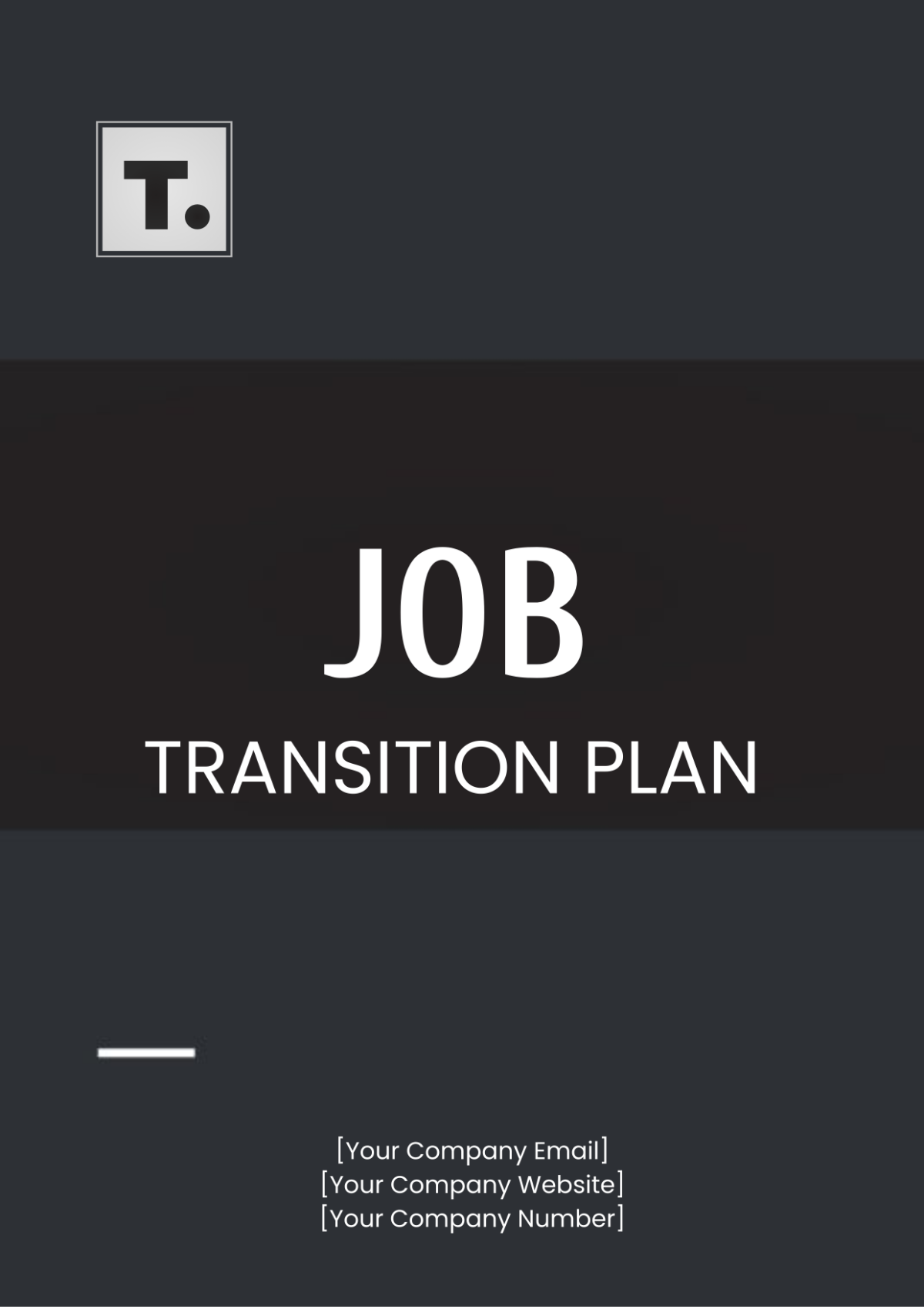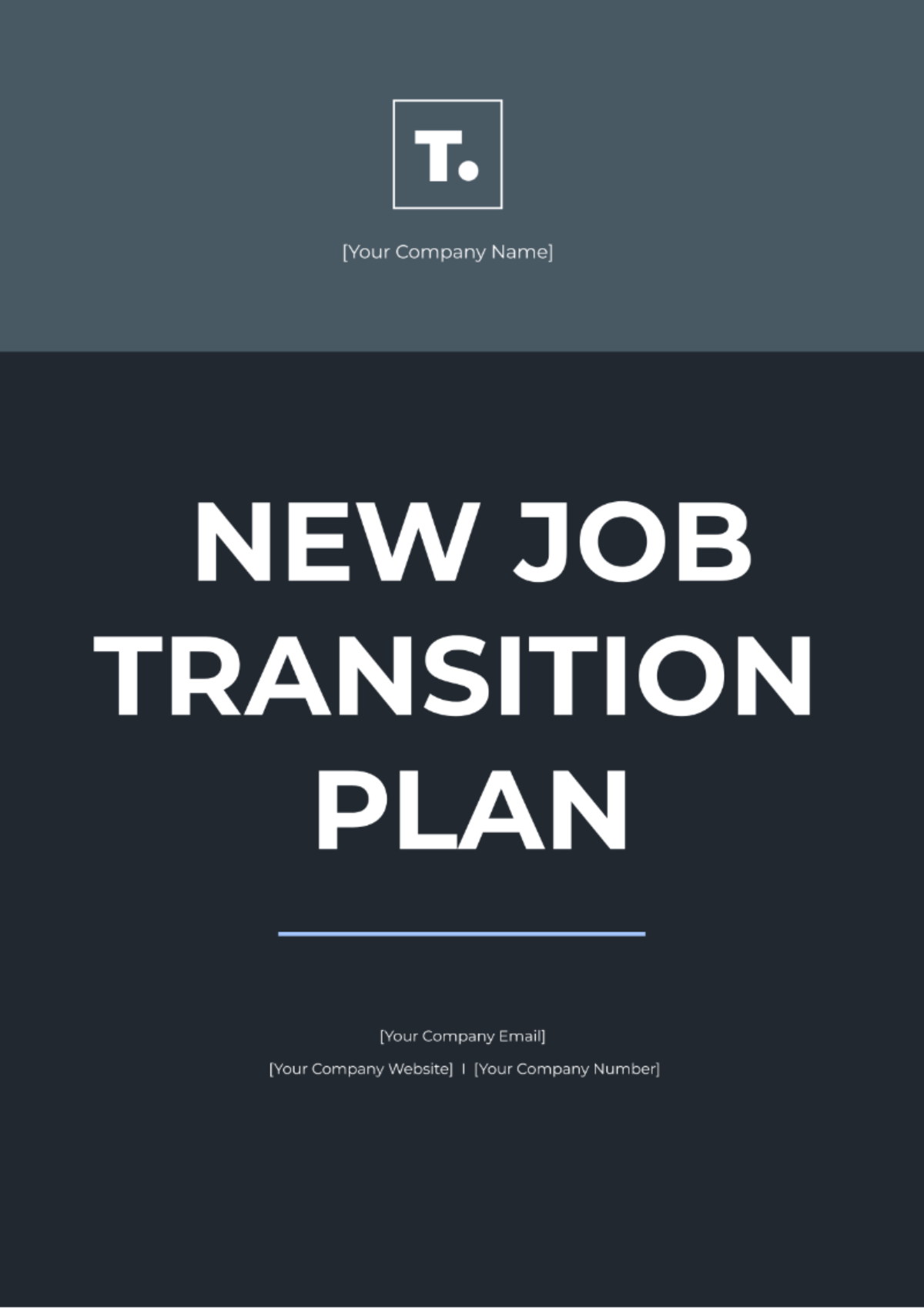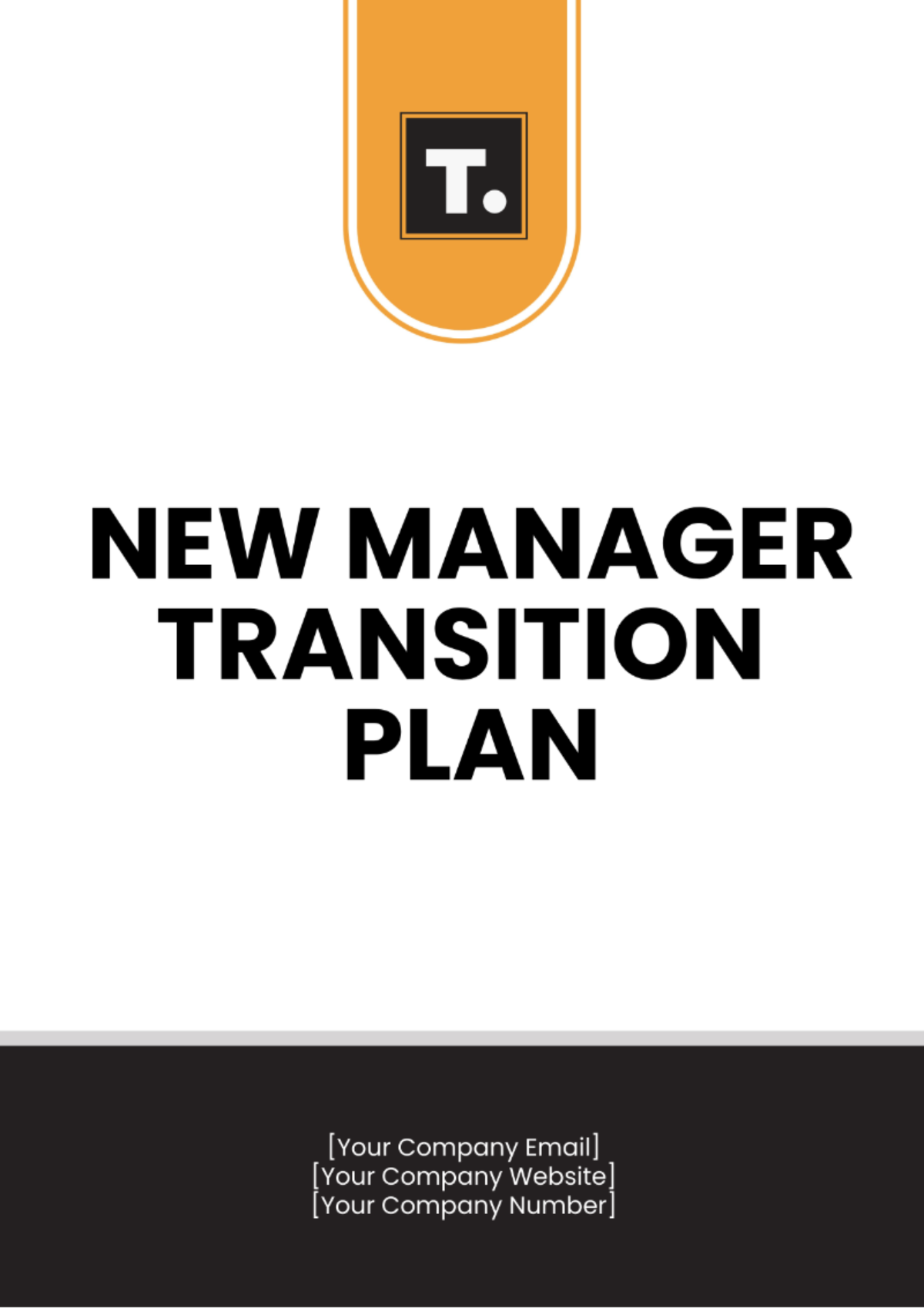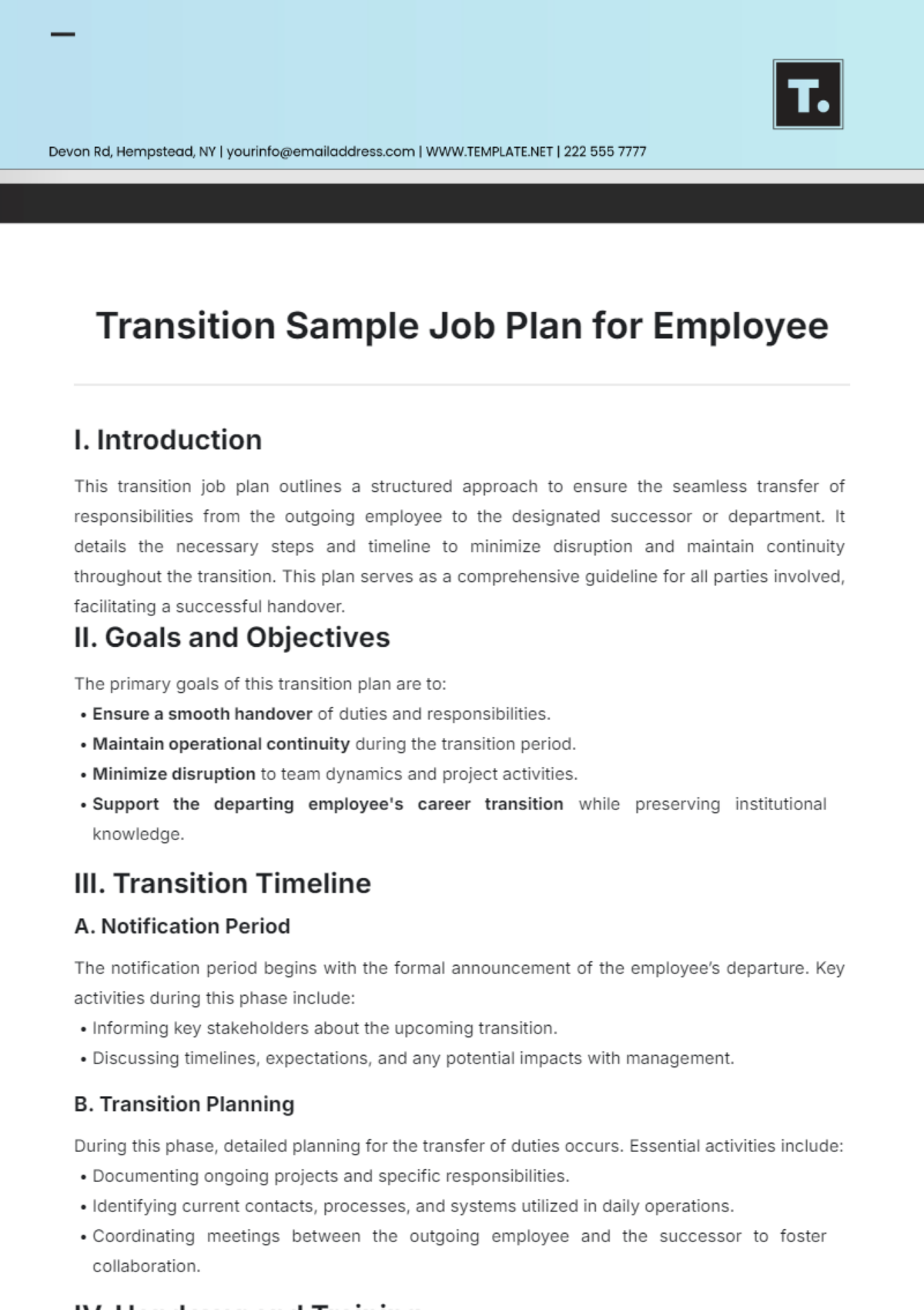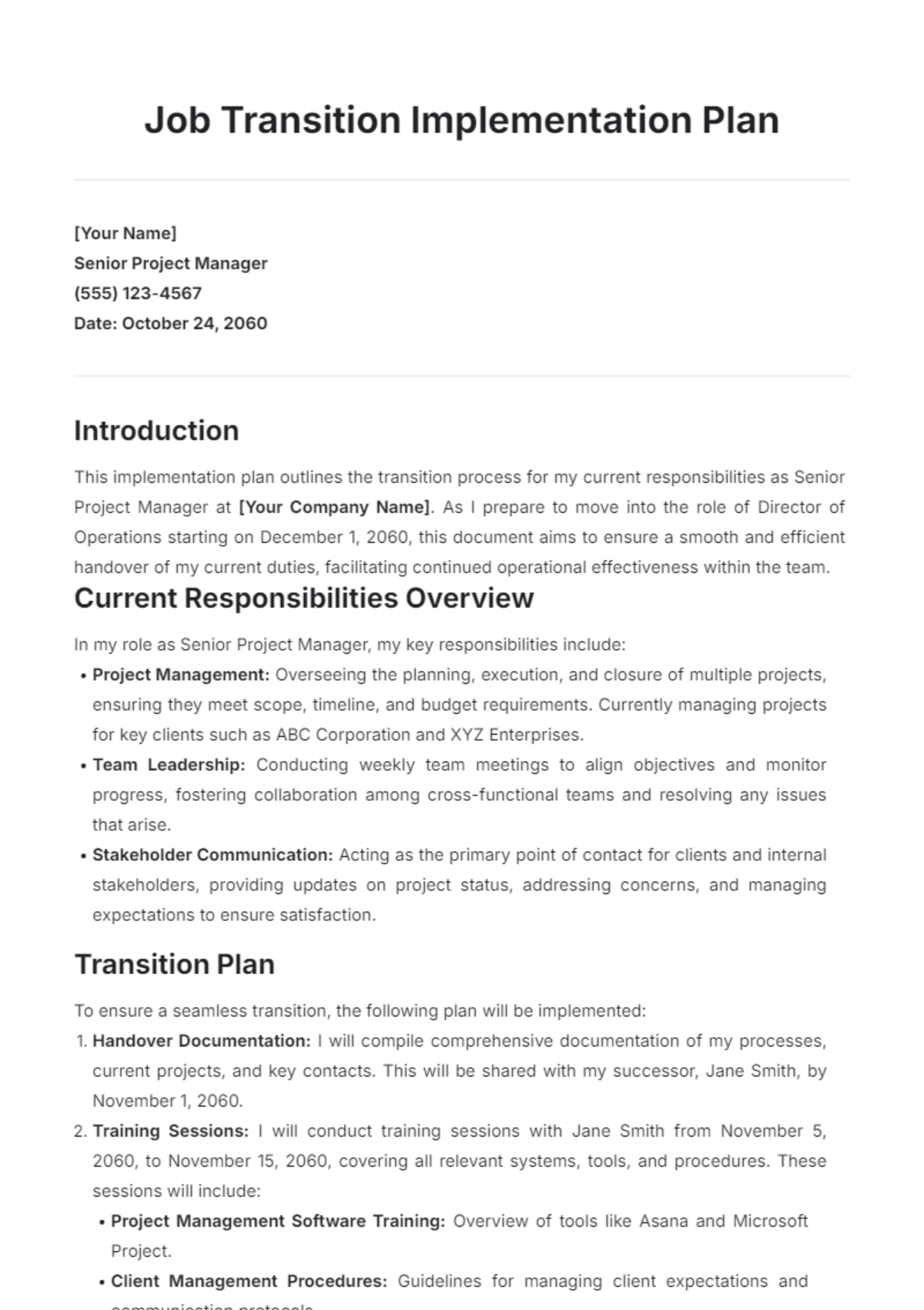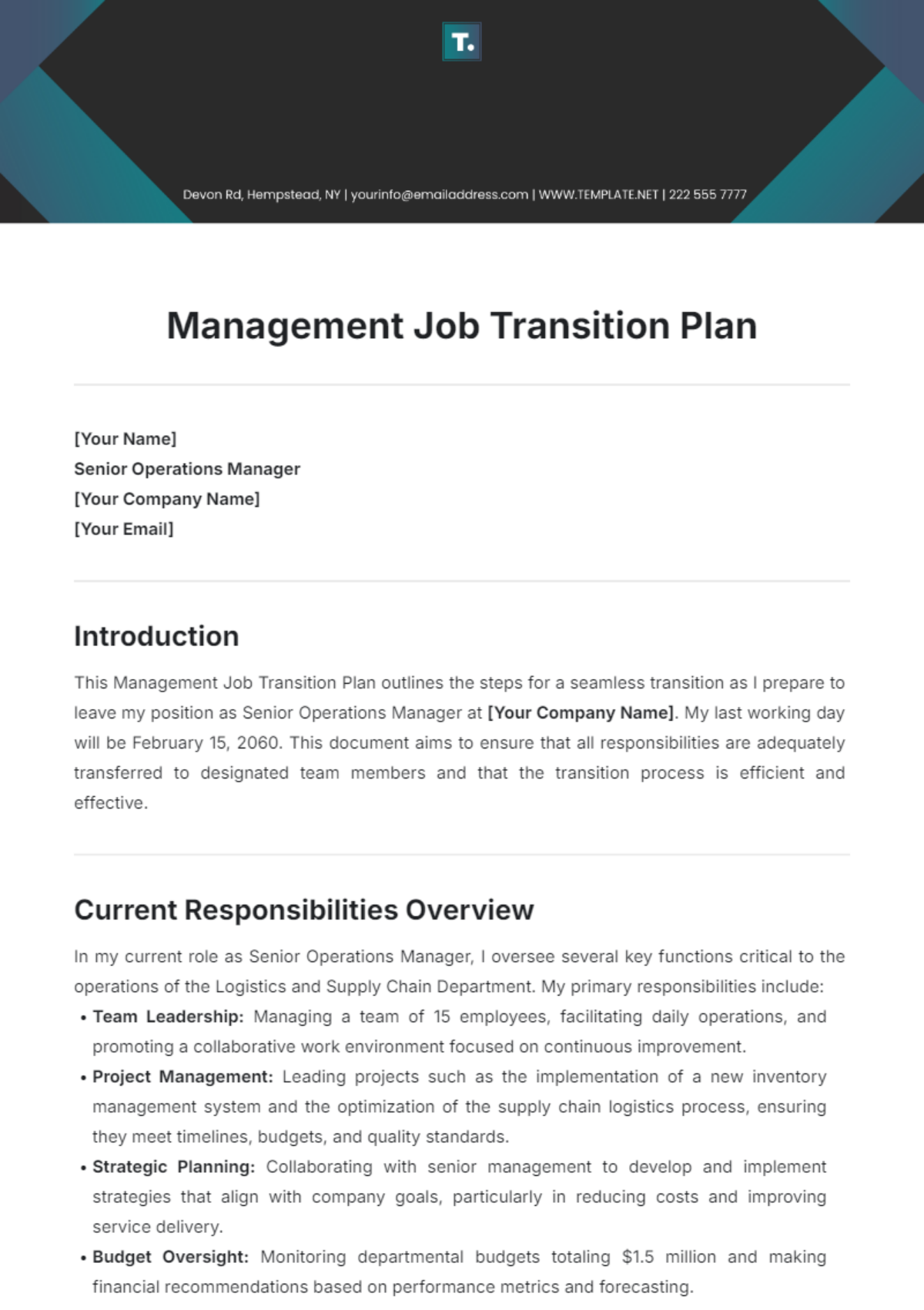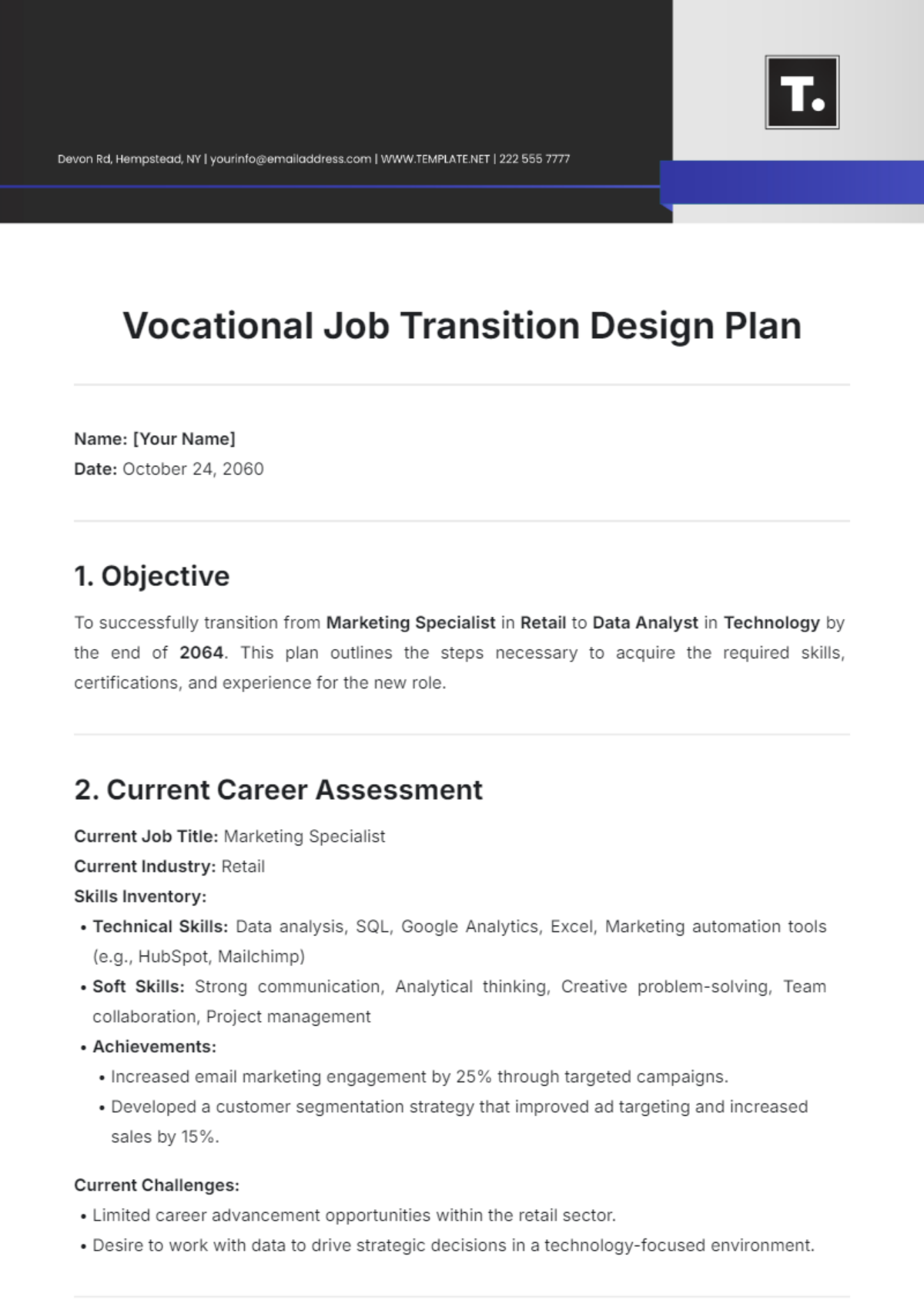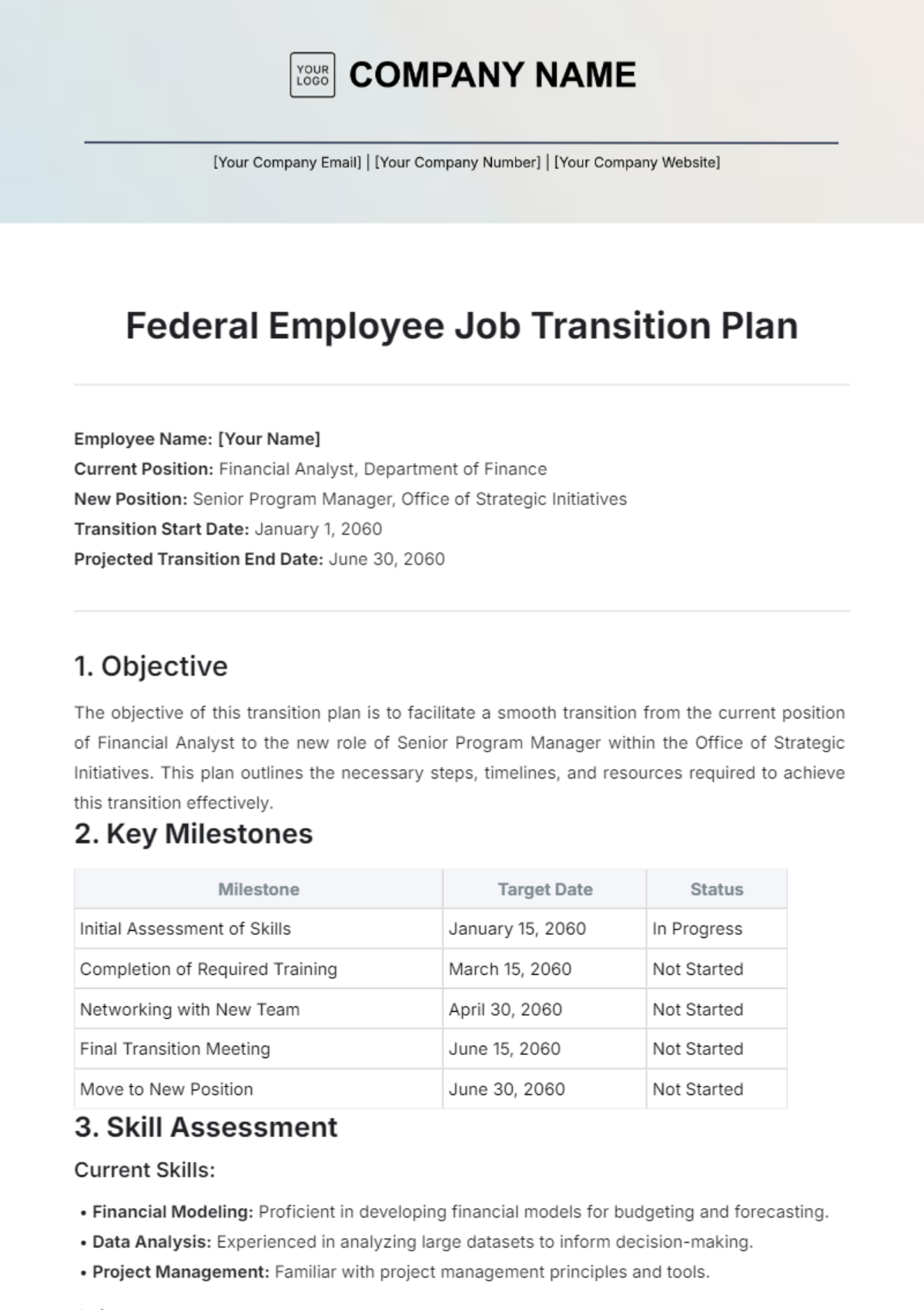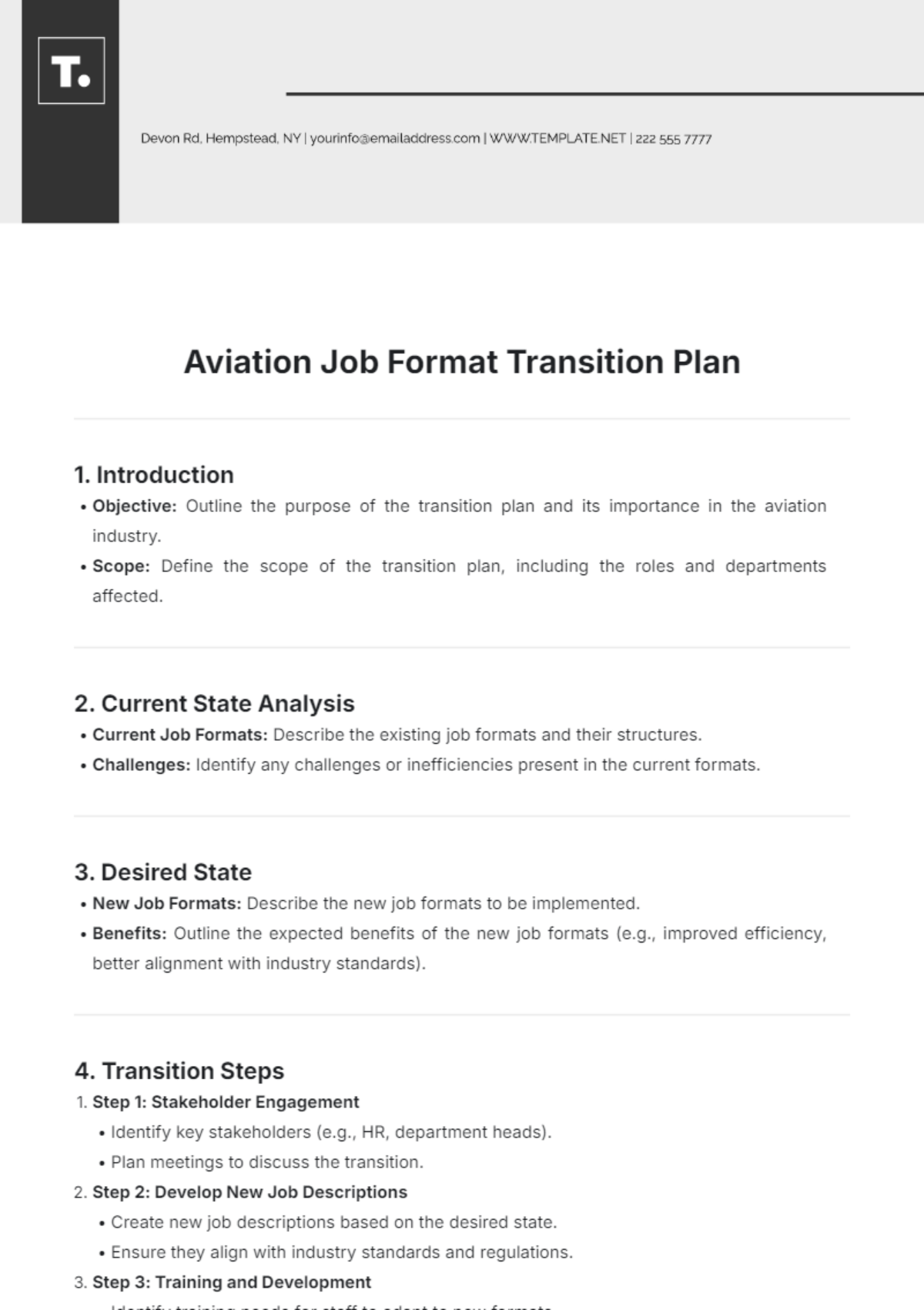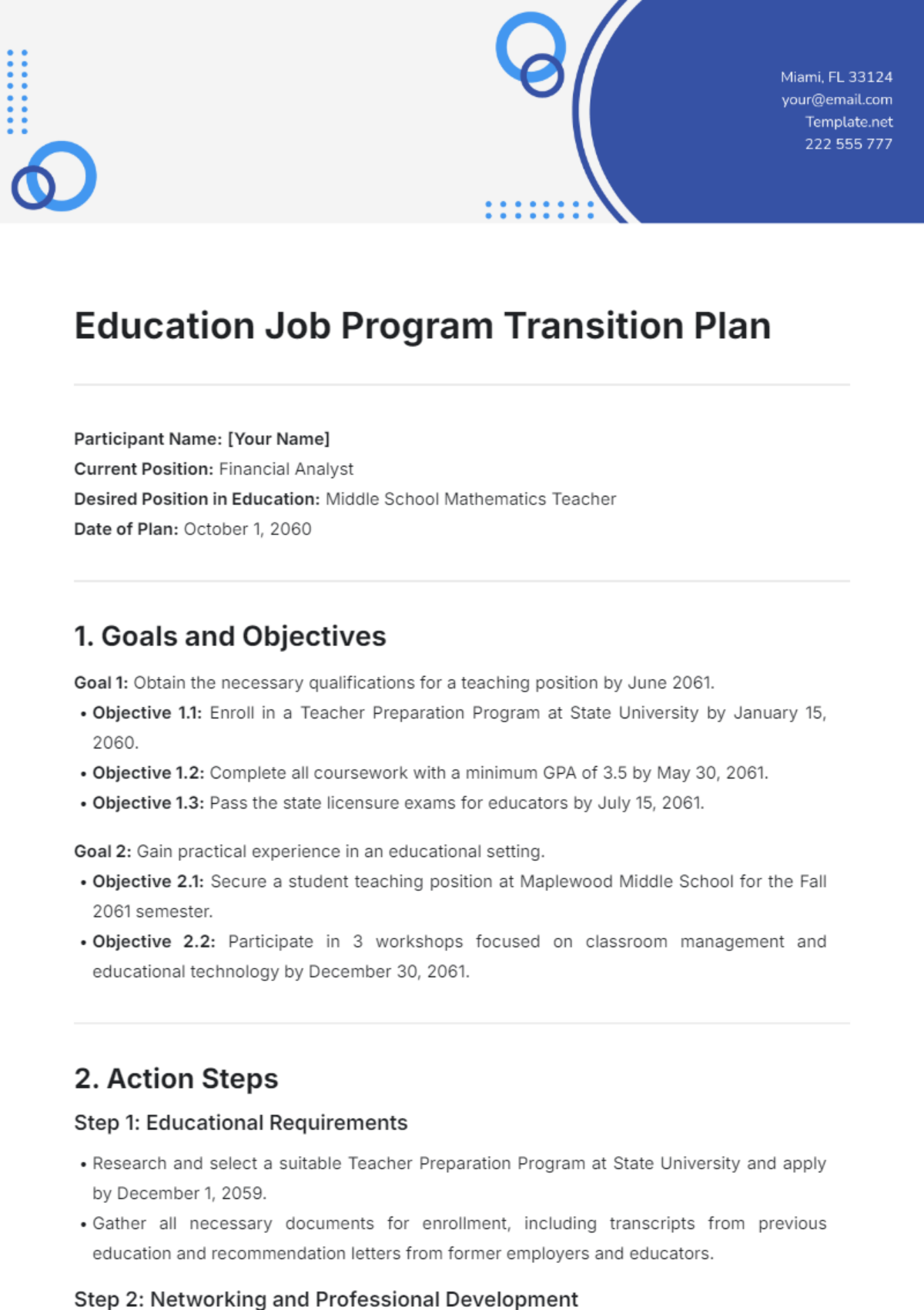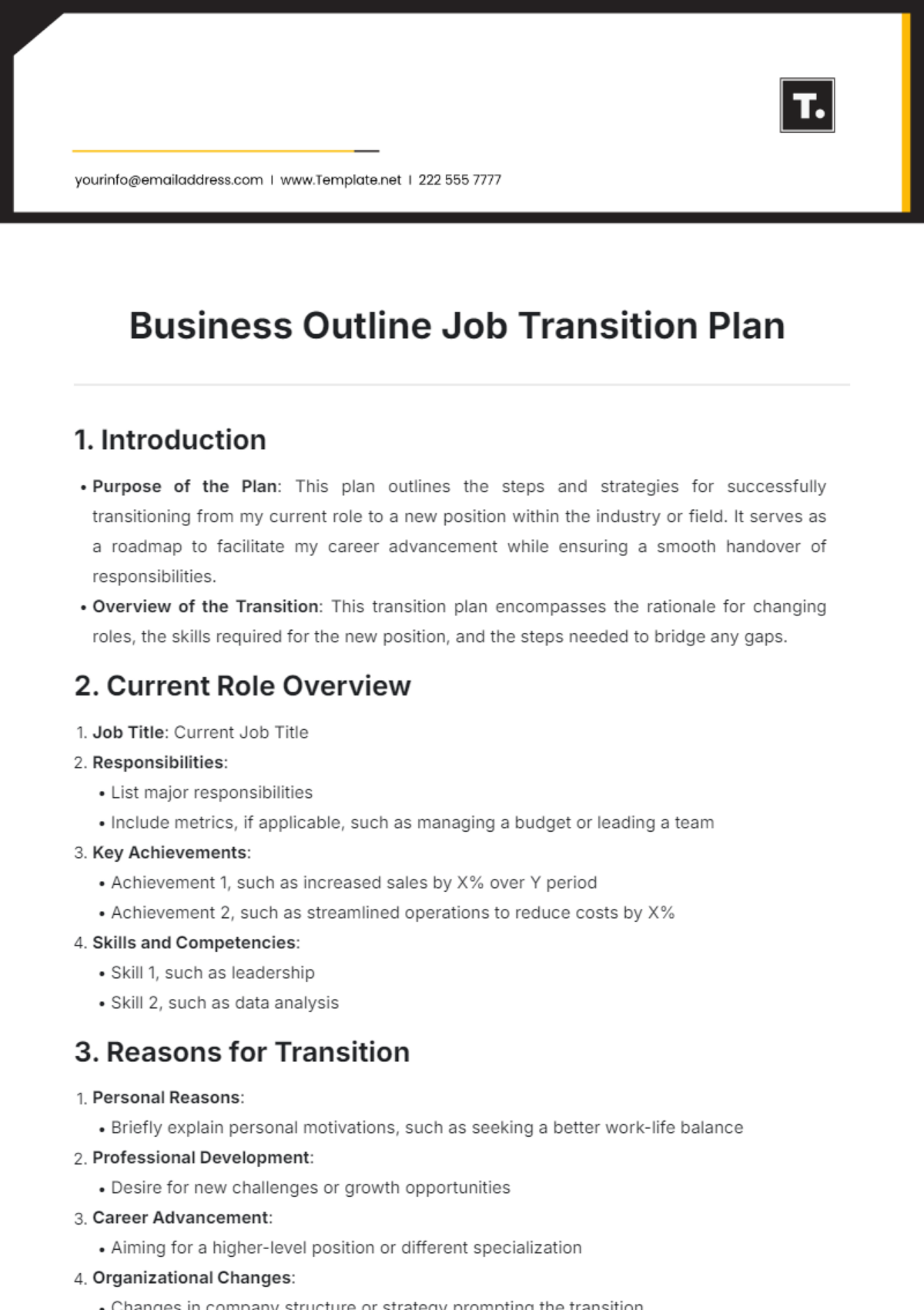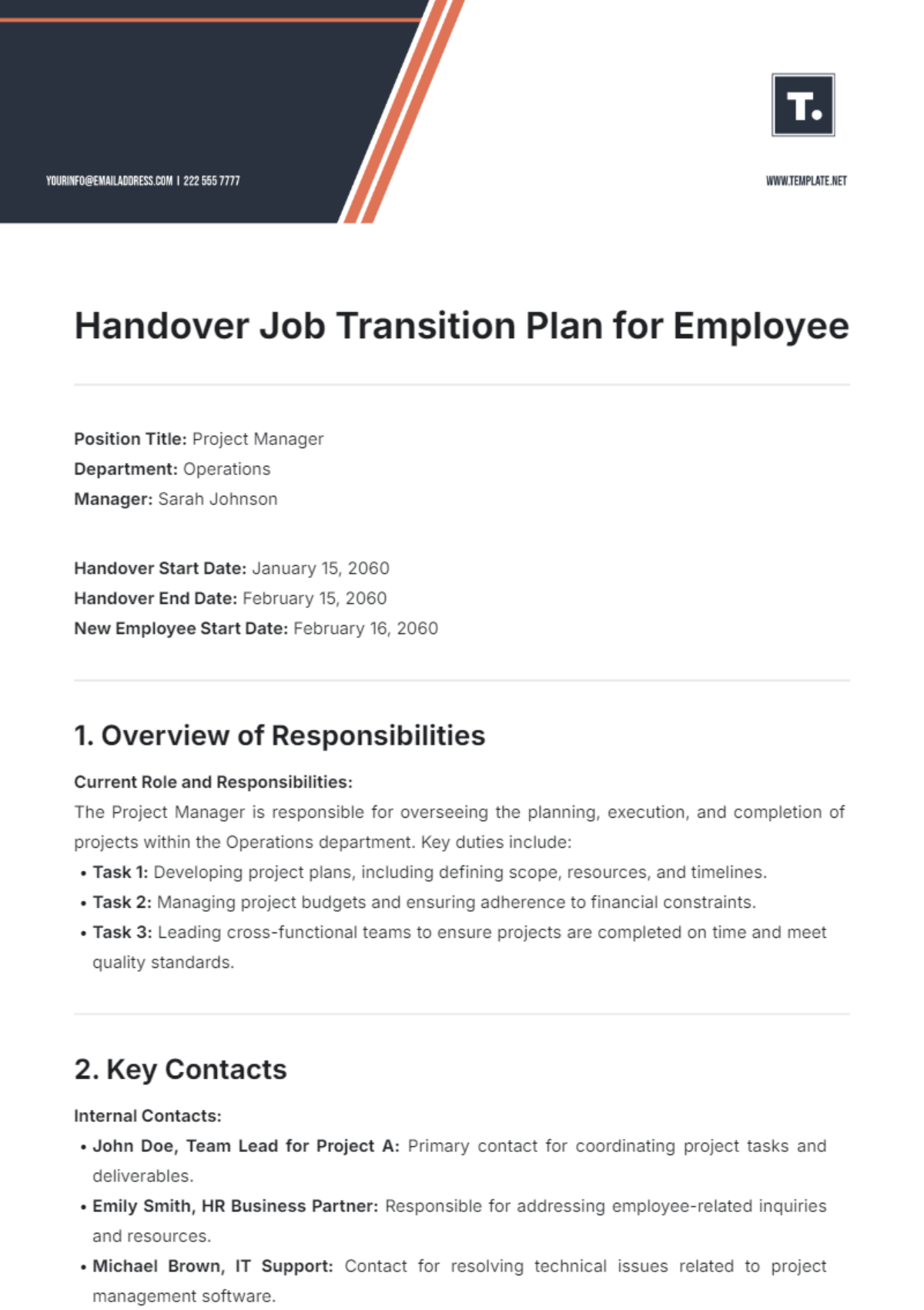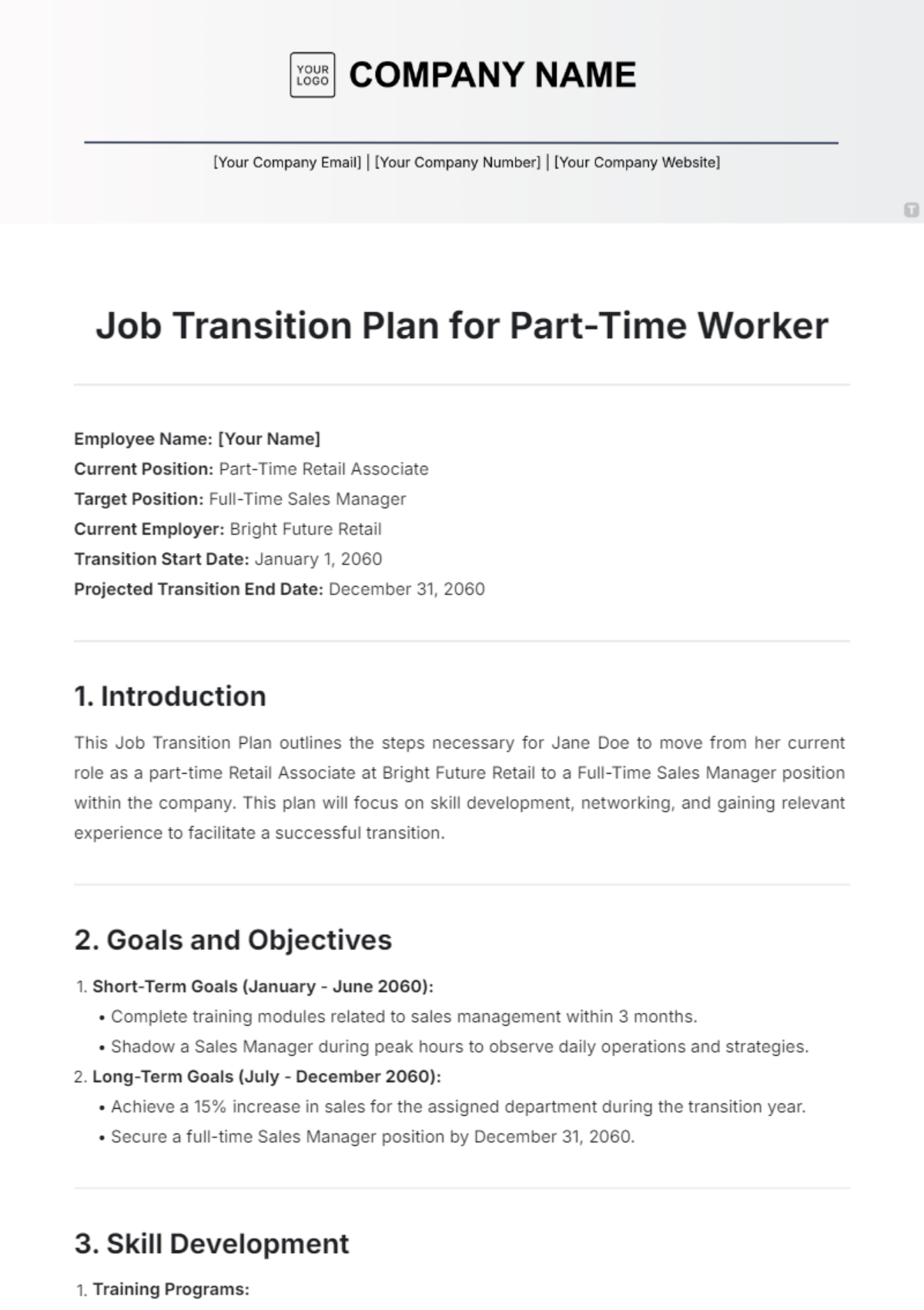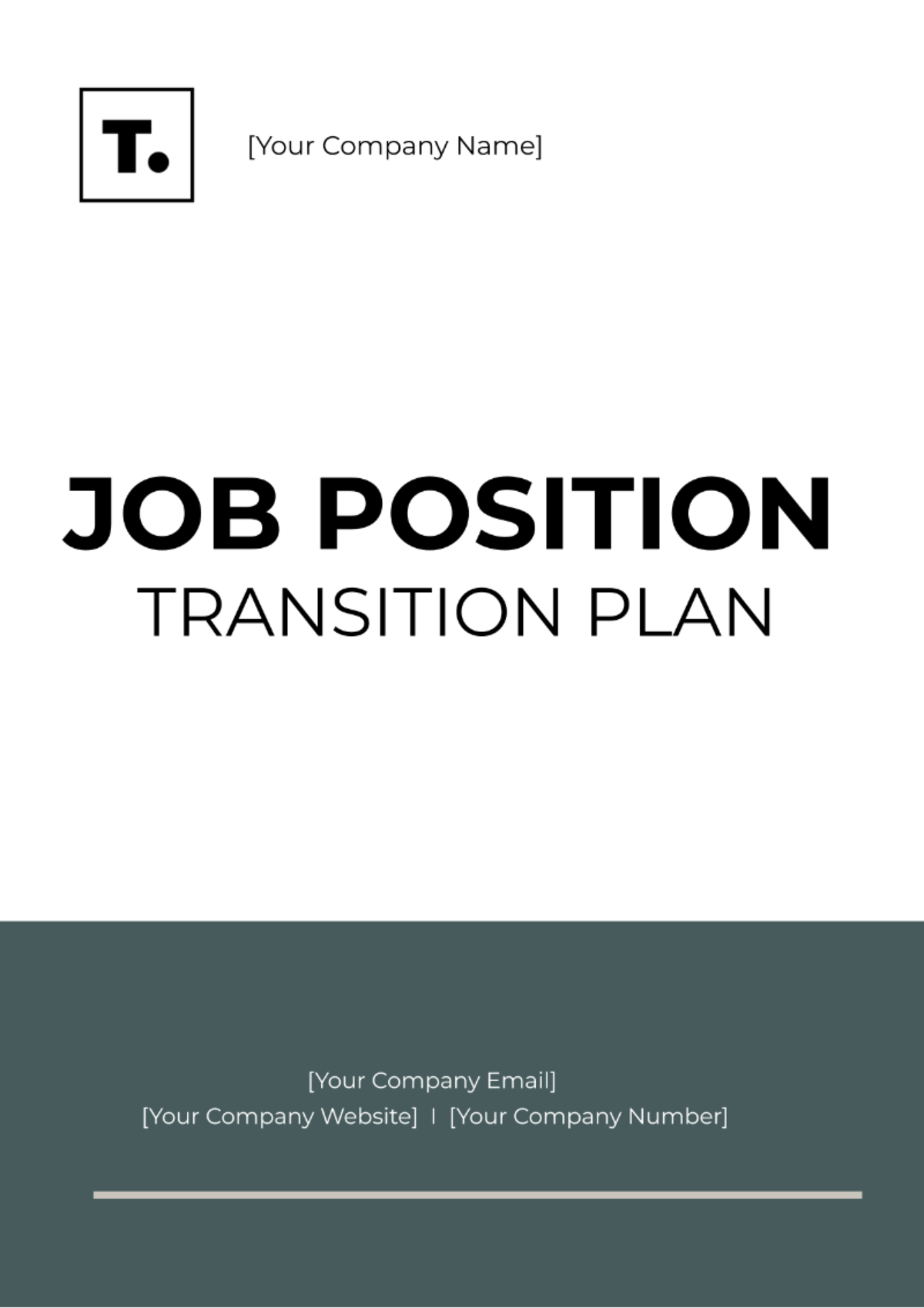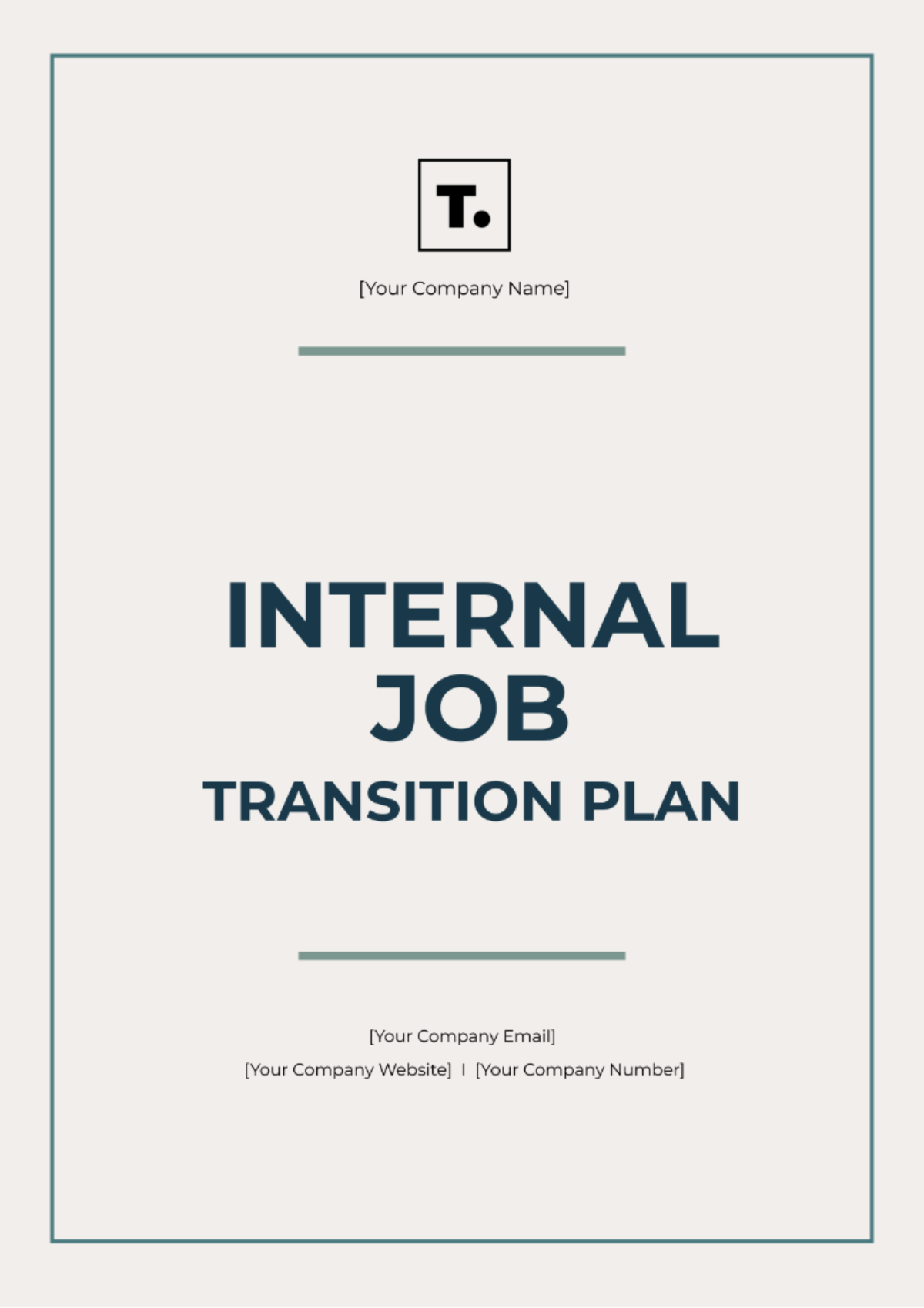Aviation Job Format Transition Plan
1. Introduction
Objective: Outline the purpose of the transition plan and its importance in the aviation industry.
Scope: Define the scope of the transition plan, including the roles and departments affected.
2. Current State Analysis
Current Job Formats: Describe the existing job formats and their structures.
Challenges: Identify any challenges or inefficiencies present in the current formats.
3. Desired State
New Job Formats: Describe the new job formats to be implemented.
Benefits: Outline the expected benefits of the new job formats (e.g., improved efficiency, better alignment with industry standards).
4. Transition Steps
Step 1: Stakeholder Engagement
Identify key stakeholders (e.g., HR, department heads).
Plan meetings to discuss the transition.
Step 2: Develop New Job Descriptions
Create new job descriptions based on the desired state.
Ensure they align with industry standards and regulations.
Step 3: Training and Development
Identify training needs for staff to adapt to new formats.
Develop a training schedule and materials.
Step 4: Implementation Timeline
Outline a timeline for implementing the new job formats.
Include milestones for progress tracking.
5. Communication Plan
Internal Communication: Plan how to communicate the changes to employees.
Feedback Mechanism: Establish channels for employees to provide feedback on the transition.
6. Evaluation and Monitoring
Metrics for Success: Define key performance indicators (KPIs) to measure the success of the transition.
Review Schedule: Plan regular reviews to assess the effectiveness of the new job formats.
7. Conclusion
Summarize the importance of the transition and the expected outcomes.
